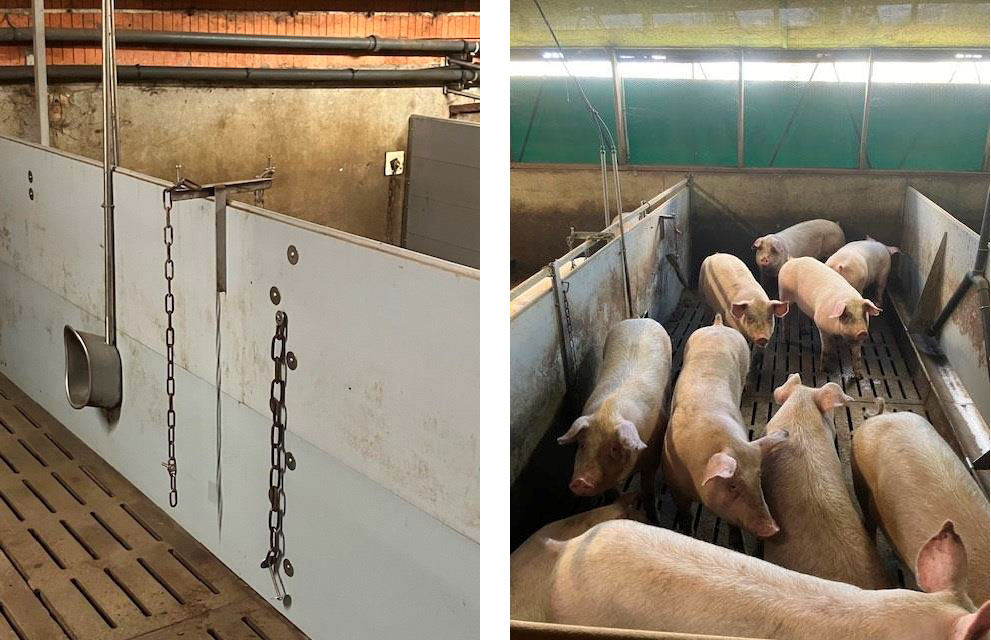Abstract: Observing and isolating biters: a proactive approach to limiting tail-biting
Type and Average of Pigs on the Farm
1200 weaners, 1200 pre-fattening pigs, and 1000 fattening pigs.
Farming System
Intensive production system.
Description and Evaluation of the Good Practice
As soon as a tail bite with blood is observed, the farmer remains in the pen to identify the biting pig, which typically takes around 5 minutes. This immediate identification prevents the spread of tail biting to other pigs. Two techniques are used to identify the biter: (1) introducing a new object to observe which pigs are more attracted to it or to tails, and (2) applying oxytetracycline spray to the bitten pig’s tail and checking after 10 minutes for pigs with colored snouts. Once identified, the biter is removed and isolated in a dedicated pen. After 2–3 weeks, it is reintegrated into a group of other biters, and later mixed with larger pigs during room changes. This approach has proven effective, with no recurrence of biting behavior.

Farm Context
- Environmental Enrichment
Manipulable materials include poplar cleats (1 per pen), chains, jute residues from farrowing areas, and boat ropes. No bedding-type material is used. - Pigs
Genetic type: DanBred. Tail docking varies by batch and season, ranging from 15% to 80%. In late summer, tail docking rates are lower due to stunting. - Housing and Management Characteristics
Stocking density: 0.26 m²/pig (post-weaning), 0.52 m²/pig (pre-fattening), 0.63 m²/pig (fattening). Pigs per pen: 25 (post-weaning and pre-fattening), 12 (fattening). Docked and undocked pigs are mixed. Flooring is slatted. Ventilation is dynamic (inlet via duct, low extraction). Natural light is available only in pre-fattening. No outdoor access.
Feeding: dry feed (post-weaning and pre-fattening), soup (fattening). Diet is homegrown. Feeding access: 7 pigs (post-weaning), 5 pigs (pre-fattening), all pigs (fattening). Water: 2 bowls per pen (post-weaning and pre-fattening), 1 bowl per pen (fattening). - Management Practices
Socialization: groups of 4–5 litters at 12 days old (about 30 out of 50 litters). Health: good status. Tail biting is monitored daily. When biting is observed, the biter is removed, and enrichment materials are added (rubber toys, plates, ropes). Bitten pigs are treated with disinfectant, anti-inflammatory, and antibiotics. - Economic Analysis
Maximum of 15 carcasses rejected (fully or partially) out of 800 pigs, representing a rejection rate of 1.88%. Average live weight: 97.36 kg per year. - Environmental Analysis
A bacterial compound, is added weekly to slurry to liquefy it. Low ammonia concentration has been observed by the farmer.
- Replicable Benefits and Relevance for Other EU Countries
This practice is feasible if the farm has suitable infrastructure and amortized facilities, as it requires dedicating a pen for biters. For new farms, implementation may be more costly. However, the practice is applicable across all EU countries.

